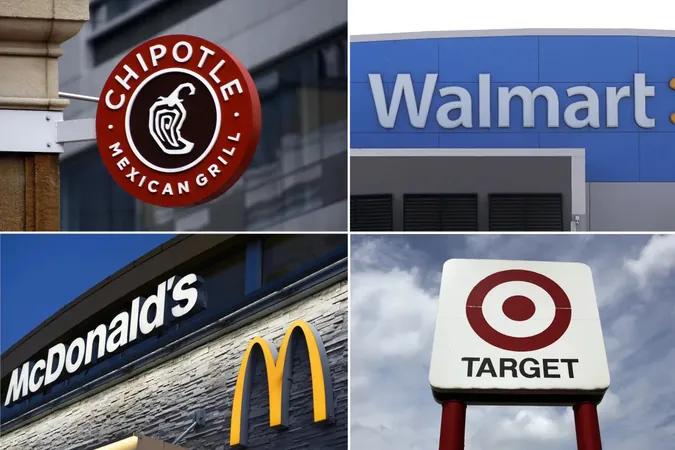
2024 Retail Revolution: How Shoppers Are Reshaping the Market Landscape!
2024-12-30
Author: Ken Lee
In the face of economic pressures, 2024 has become the year of value-driven shopping in the U.S. Consumers, feeling the pinch from soaring housing and food prices, are becoming increasingly selective about their expenditures. This shift in behavior is not just a reaction to the economy; it reflects an evolving retail landscape characterized by changing priorities and shopping habits.
As wealthier customers look for ways to cut costs, many have turned to budget-friendly giants like Walmart and Aldi, leaving traditional department stores struggling to keep up. Instead of indulging in lavish dining experiences at upscale restaurants, patrons are opting for fast food or whipping up meals at home. This trend has shifted the entire eating and shopping environment, making thriftiness the new chic.
The consequences of this consumer shift are stark. By mid-December 2024, Coresight Research noted an alarming rise in retail bankruptcies, with 48 stores filing for bankruptcy compared to just 25 the previous year. The restaurant sector was similarly hard-hit, with 22 chains declaring bankruptcy—marking the highest rate since 2020.
Trends and Insights: Winners and Sinners in Retail
Winners:
- **Walmart**: The retail powerhouse continues to thrive during economic downturns, with grocery sales making up a whopping 60% of its business. Just as it did during the 2008 recession, Walmart has seen a spike in higher-income households turning to its aisles for budget-friendly options. The company has enhanced its online shopping experience and refreshed its clothing lines with more stylish offerings, aiming to retain this demographic.
- **Amazon**: Riding high on its reputation for unbeatable deals, Amazon adapted to the changing retail climate with the launch of Amazon Haul in November—a budget-friendly storefront featuring items priced under $20. The success of Prime Day in July further highlighted Amazon's ability to attract budget-conscious shoppers. However, the e-commerce giant may face challenges ahead due to potential tariffs on Chinese goods and labor unrest in the U.S., which could impact their supply chain and pricing.
- **Fast Casual Chains**: The fast-casual dining segment has emerged victorious, with chains like Shake Shack and Cava thriving amidst changing culinary preferences. Cava reported a staggering 33% revenue growth in the first nine months of 2024 as it aggressively opened new locations. Chipotle, although initially criticized for downsizing portions, regained customer loyalty by retraining staff to focus on "consistent and generous" serving sizes.
Dead Ends:
- **Traditional Department Stores**: Many traditional retailers have struggled to adapt, leading to significant declines in foot traffic and sales. Consumers now prioritize online shopping or seek out budget-friendly alternatives, leaving department stores at a crossroads.
- **Expensive Furniture and Renovations**: In a bid to curb spending, many consumers are forgoing major furniture purchases and pricey home renovations. Instead, they have shifted towards low-cost decor items like picture frames and candles, opting for stylish yet inexpensive ways to refresh their living spaces.
Overall, 2024 marks a vigorous transformation in retail and dining preferences, driven by a newfound emphasis on value. As consumers continue to tighten their belts, businesses that adapt to these changes will find themselves well-poised for success, while those who cling to outdated practices may find themselves left behind in the fast-fading past.


 Brasil (PT)
Brasil (PT)
 Canada (EN)
Canada (EN)
 Chile (ES)
Chile (ES)
 Česko (CS)
Česko (CS)
 대한민국 (KO)
대한민국 (KO)
 España (ES)
España (ES)
 France (FR)
France (FR)
 Hong Kong (EN)
Hong Kong (EN)
 Italia (IT)
Italia (IT)
 日本 (JA)
日本 (JA)
 Magyarország (HU)
Magyarország (HU)
 Norge (NO)
Norge (NO)
 Polska (PL)
Polska (PL)
 Schweiz (DE)
Schweiz (DE)
 Singapore (EN)
Singapore (EN)
 Sverige (SV)
Sverige (SV)
 Suomi (FI)
Suomi (FI)
 Türkiye (TR)
Türkiye (TR)
 الإمارات العربية المتحدة (AR)
الإمارات العربية المتحدة (AR)